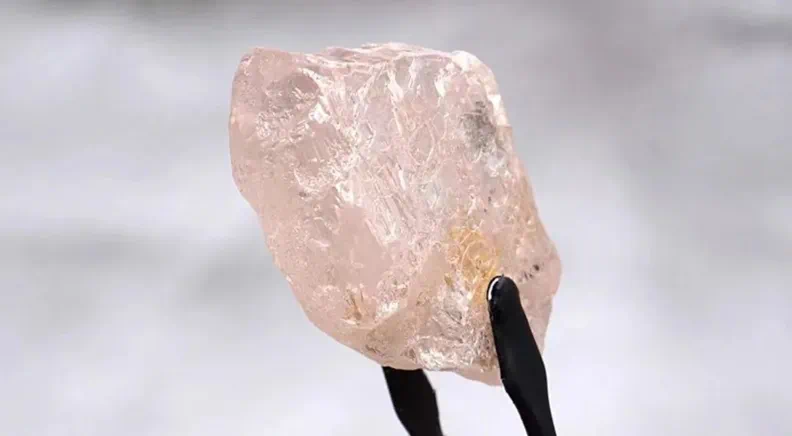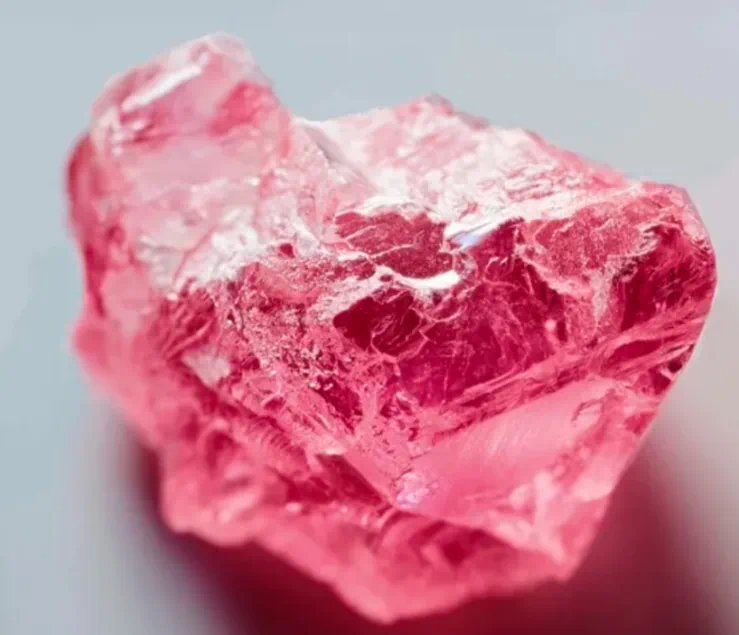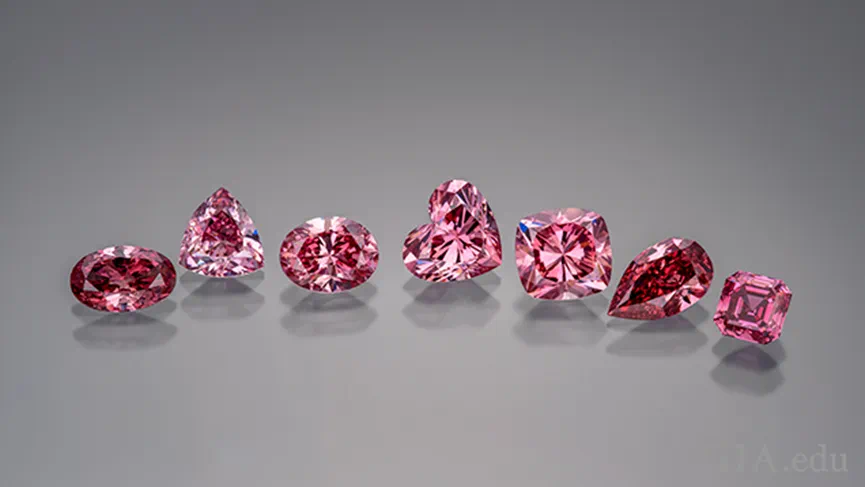What is a pink diamond? Causes of pink diamonds
Pink diamonds refer to pink diamonds. This colour is bright and full of vitality, which often reminds people of love and romance.
The formation of pink diamonds can be traced back to the geological activities of billions of years ago, after a long period of natural formation. The process of its formation in the depths of the earth's crust is very rare, so every pink diamond is like a masterpiece of nature. Most of the pink diamonds mined around the world are brownish pink diamonds. The true pure pink pink diamonds are less than 1% of the global production of pink diamonds. Their rarity is much higher than that of ordinary white diamonds, which can be described as rare.
The colour of the pink diamond is not caused by chemical reasons, but by the dislocation of the carbon atoms inside the diamond and the deformation of the internal lattice, which makes it appear natural pink.
Research has proved that the colour formation of 99.5% of pink diamonds is caused by the deformation of the crystal structure of diamonds, not by trace elements. For example, nitrogen, a trace element, produces yellow in diamonds, and boron produces blue. In pink diamonds containing nitrogen, the colour is usually concentrated in parallel narrow bands. These narrow bands are called sliding surfaces, crystals, or pink or brown twins according to the colour. These lines can be seen under the microscope, and the diamond cutters are perpendicular to the table to maximise the body colour.
Although many colour defects can be introduced through laboratory processing, the atomic-level deformation of the diamond crystal structure caused by plastic deformation cannot be introduced.
Origin of natural powder diamond
More than 90% of the world's natural pink diamonds come from the Argyle deposit 2,200 kilometres northeast of Perth, Australia. Most of them are small particles. The average weight of Argyle pink diamonds is about 1 carat. The mining area produces about 50 carats of pink diamonds every year, accounting for 0.0001% of the total diamond production. The pink colour of the most luxurious diamonds in the Argyle region is related to the destruction they have suffered in the depths of the earth. According to Hugo Olyruk, a geologist at Curtin University in Australia, these diamonds were colourless at first, but the huge pressure generated after the collision of the mainland can change the crystal structure of diamonds, thus turning these diamonds into colourful colours such as pink. Diamonds (structures) will be bent and distorted," Oliluk said. "If they (the lattice) are slightly distorted, some diamonds will turn pink." Further distortion will make them brown. The structure of the pink diamond has changed during its formation, which is actually a natural defect. However, this discolouration has made it a rare product.
However, the mining cost of the Argyll Diamond Mine is too high due to the address, temperature and other reasons. The mine was announced to be closed ten years ago, resulting in a cliff-like decline in global powdered diamond production.


How are the pink diamonds in cultivated diamonds produced?
With the rise of diamond cultivation technology, the cultivation of pink diamonds has also been produced. So, how are the pink diamonds produced in the laboratory on the market?
The first way is to make diamonds made by a laboratory containing nitrogen impurities through radiation treatment (exposed to radiation) and then put them at a medium temperature (600℃ to 1000℃). Most pink and related colours are formed in this way.
This process produces defects in the lattice (a carbon atom adjacent to a nitrogen atom in the lattice is missing) and forms the centre of the nitrogen vacancy, that is, it generates the colour. According to Eaton-Magaña, a small number of natural pink diamonds have this nitrogen vacancy centre, which can be identified by spectral lines of 575 nm and 637nm.
These pink diamonds with nitrogen vacancy account for only 0.5% of the natural pink diamonds in the GIA database. They belong to type IIa diamonds (a rare diamond with extremely pure chemical composition), with a very uniform pink color, and no visible coloured crystals.
Generally speaking, pink diamonds with natural nitrogen vacancy are lighter in colour, while laboratory-made and processed diamonds are darker in colour.
The second method is laboratory diamonds manufactured by chemical vapour deposition (CVD), which use specific nanospectroscopy to generate orange-pink in the manufacturing process. Researchers say that GIA has only seen some of these gems, and their colours are not as bright as those of pink diamonds made by other laboratories.
The third method is rare. It is to add a large amount of silicon in the CVD manufacturing process. When the gem is exposed to ultraviolet rays, it will produce a reversible colour change from stable pink to short blue.

Of course, the technology of cultivating diamonds is changing rapidly, and scientists are also constantly exploring new technologies to mine and produce pink diamonds in a more environmentally friendly way. We also look forward to more innovative methods being used to produce high-quality and a large number of pink diamonds to meet global needs.
Whether it is natural or laboratory-cultivated pink diamonds, they are precious gifts given to us by nature.
Source: Global Science and Jewellery Student Association
